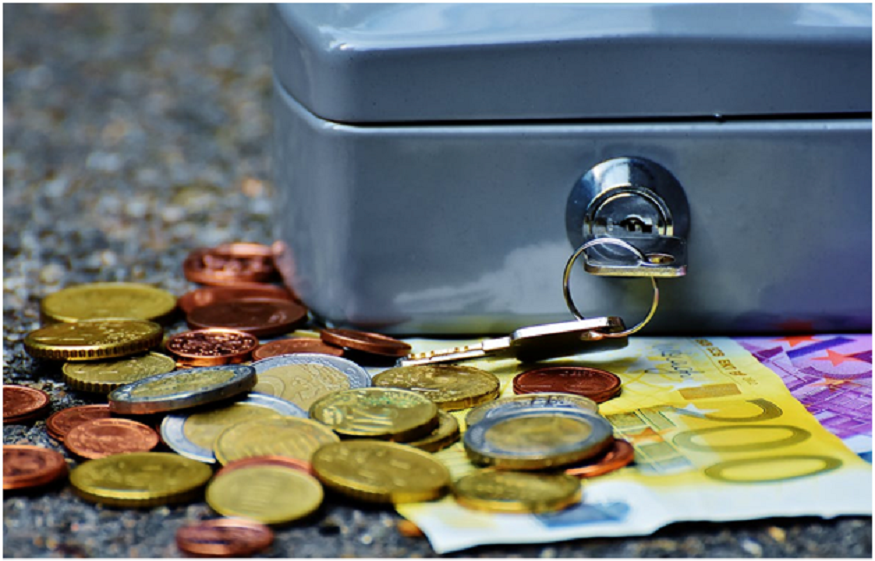One of the best ways to spruce up your home is by refinancing it. This can help you stretch your budget for the projects that you have in mind and also save you money on interest rates.
Paying for home improvements might be expensive, and refinancing has its own advantages. When you want to do upgrades, such as installing granite countertops and wooden cabinets, maybe this is the right time to do it.
Other Reasons Why You Should Do Refinance
When you’re ready to redecorate your home, you might want to do some refinancingbecause it can be the best option since it can save you a lot of money. You may be able to get a better interest rate, lower payments, and a bigger payoff than if you were to go through a consumer loan or use your credit cards. These points are discussed further below:
1. Take Advantage of the Lower Interest
The mortgage rates are higher today, and refinancing is skyrocketing. The costs of refinancing from sites like Besterefinansiering.no/ can still benefit you in the long run. You might also want to drastically change the payments that you’re making monthly on the mortgage. While some financiers won’t offer you the 0% APR as an introductory membership, you’ll still pay off a lower interest rate when you get the same amount of money.
2. Renovation is a Great Alternative to Buying
The homebuying season might not be a good idea today because of the recession and inflation. Most of the time, the bidding wars are not worth it, and it’s better to customize the other features of your home that you may not like.
You might want to do a different look to your bedroom or bathroom, and if so, you can always hire contractors at a lower cost than shopping for a new property.
3. A Good Option if you’ve Improved your Credit Score
The refinancing route can be a good option, especially if you’ve already significantly improved your credit score. Aside from the lower monthly payments, you’ll also get better interest rates that make everything much more affordable.

Different Interest Rates to Know
When you’re applying for refinancing, you’ll be able to get offers with various interest rates. Here are some of the terms that you need to know about:
- Fixed Rates: This type has a fixed interest rate for the life of the loan. You will pay a set amount monthly for a period of time.
- Variable Rates: Variable rates will differ over time, so you may want to switch to the fixed rate whenever possible. It will also follow the current market trends, which means you’ll have to pay more.
- Interest-only refinancing: This type allows you to pay off your mortgage early with no penalties, but you’ll have to pay back interest on your loan balance each month. See more about this type on this page.

Pros and Cons
Refinancing can be a great option if you want to redecorate your home. Here are the pros and cons that you may want to know about before taking this route:
Advantages
- Get better loan terms, which could result in lower overall costs.
- Apply to loans with a lower interest rate, which could save you money in the long run.
- You may be able to get a larger credit, which could allow you to afford more expensive renovations.
- Qualify for a new mortgage with less than perfect credit history with the help of the right company.
- It can help ensure that your home remains in your name should you decide to sell in the future.
- Add value to your property.
Disadvantages
- You might need to pay the debt on top of your mortgage each month.
- Others might have a hard time dealing with their finances, and they might dig themselves deeper into debt if they are not careful.
Home Decoration without Spending a Fortune
It’s easy to shorten the mortgage terms and snag lower interest rates when you want to decorate your home. You can combine both to decrease the total amount you’re paying over the life of the loan. Other people see this as an opportunity to free up money by turning the equity into cash.
They will have a line of credit when they take out a new loan and replace the original mortgage. When you have enough equity and the amount is larger than the remaining balance on the property, it’s possible to pocket the difference. Other things that you can do to renovate your home without spending a fortune are the following:
- Talk to your lender about your options. Ask about available rates and terms. If you have a good credit history, your lender may be able to offer you a lower interest rate and a shorter term.
- Decide which features you want to add or change in your house. Think about what type of atmosphere you’d like to create, and then look for furniture, wallpaper, flooring, and other items that will match that theme. Look for discounted rates as well.
- Compare prices and find the best deals on the items you want. Online retailers often have discounts on furniture, wallpaper, flooring, and other home furnishings.
- Factor in the installation cost when pricing out your remodeling project. Many homeowners opt for custom curtains or draperies rather than purchasing pre-made items that need to be installed.
- Make a budget and stick to it. Don’t go overboard on one purchase just because you can afford it; instead, focus on updating multiple areas of your home that might need improvements.
Other Benefits to Know
One of the many advantages of refinancing your home is that you can save money on interest rates. Refinancing may also be cheaper than purchasing a new house, depending on your current mortgage rate and the size of your loan. You may also qualify for a lower interest rate if you have excellent credit and no recent defaults on your previous debts. Refinancing can also help protect your equity, especially when you want to sell in the future.
Another benefit of refinancing is that it can improve the resale value of your home. If you are planning to sell your property soon, refinancing may give you more funds to make improvements. The value might depend on market conditions, but you’re getting the best deals overall. Others would want to eliminate their mortgage insurance premiums, which is possible with refinancing.
Some Things to Keep in Mind
- Make sure you are comparing the offers of various companies. Other private lending institutions may give you lower interest rates if you borrow money against your home equity, but those rates may not be as low as they would be if you took out a new loan.
- Know the terms. A fixed-rate interest is one with a set amount you will pay each month. This will not change over time. A variable-rate loan can fluctuate based on market conditions.
- Compare fees and costs associated with the new deal. Some refinancing companies may charge hefty fees for things like origination or appraisal fees, which can add up quickly. Be sure to ask about these costs before signing anything.
Different Types
1. Rate-and-Term
The rate-and-term is what some people would call the regular to refinance. This replaces the original debt with a new one but with a different term. This is where the USDA, VA, and FHA come in. The financiers might want to check your equity in the property, debt-to-income ratio, and credit score before they approve your application.
2. Cash-Out
With the cash-out option, you’re still essentially replacing the old mortgage with a new one. This will also have a different term, but you’ll have a surplus in funds. This can be a good option if you’ve built substantial equity in the home. This can be found in VA, FHA, and a conventional mortgage. It’s worth noting that USDA might not offer this type.
3. Cash-In
The cash-in will require you to have at least 20% equity in the home. Others would want a loan-to-value ratio of less than 70%, depending on the lenders.
With this type, you’ll pay larger towards the principal to lower your LTV ratio. This will help qualify people to get a loan, especially if they don’t have large ownership of their property.
Steps to Take

When you refinance your home, you can save money on your loan and get better terms. Here are the steps to take:
- Talk to a mortgage lender to see what options are available to you. There are several different types of refinancing, so it’s important to choose the one that best suits your needs.
- Compare interest rates and fees between different lenders. Make sure you understand all the costs associated with refinancing, including origination fees, interest rate adjustments, and prepayment penalties.
- Meet with a financial advisor who can help you assess your current financial situation and recommend the best refinancing option.
- Refinancing can be a complex process, so be sure to have all of your documents ready before you meet with a lender. This includes your credit score, income verification, and a recent evaluation of your home’s value.
Other Things to Know
- You can get your mortgage rate lowered – This is especially important if you have good credit and a low-interest rate on your existing mortgage.
- Have the home loan term extended – If you’re looking to redecorate your home and don’t want to take on more debt right away, getting a longer loan term could be a better option.
- Add extra features to your home – Adding additional features such as a pool or deck can dramatically increase the value of your property, making refinancing the perfect way to finance those upgrades.






Leave a Reply
You must be logged in to post a comment.